The Caste System in Bengal, Part 3
BY: SUN STAFF

Brahmans from Calcutta Series
Solvyns, Hand-colored Engravings, c. 1799
Jan 25, CANADA (SUN) — The last in a three-part series on the varnasrama system in Bengal, with a pictorial study of the various varnas and asramas.
In the following passage, excerpted from the book, "The Caste System of the Hindus", by Rajah Comm (Varanasi, 1963), we find an interesting description of how the line of brahmans was regenerated in Bengal around 940 or 990 A.D. Having degenerated significantly in preceding years, the Kings of that time attempted to orchestrate a revival of the brahmans by importing more purified and qualified personalities into the local societies to serve the people. Navadvipa was one such town. Unfortunately, Bengal was not spared from suffering under a further deterioration into caste Brahmanism, which Lord Caitanya Mahaprabhu later denounced.
"During the reign of Adisura, a Vaidya King of Bengal, the celebration of a yajna (sacrifice) became necessary owing to a drought, but there having been at that time no Brahmana so learned as to perform it, Adisura requested Virsinha, the King of Kanya Kubjya (Cononj), to send him some Brahmanas versed in the Veda and competent to perform the intended yajna. Five Brahmanas were accordingly sent:
1. Bhattanarayana [from whom the Tagore family sprung], who was said to be of Sandilya Gotra, being descended from the sage Sandilya; 2. Sriharsha of Bharadwaja Gotra, from the sage Bharadwaja; 3. Vedagarva of Sawarna Gotra, from the sage Sawarna; 4. Chhandara of Vatsya Gotra, from the sage Vatsya; and 5. Daksha of Kasyapa Gotra from the sage Kasypa.
These five Brahmans brought five Kayastha servants with them, viz.: 1. Makaranda Ghosh; 2. Kali Dasa Mitra; 3. Dasaratha Guha; 4. Dasartha Basu and 5. Purushottama Datta. These five Brahmanas as well as their servants, the five Kayasthas, were afterwards honored as the Kulina. Of these, those who lived in the Barendra land of North Bengal were called the Barendra Brahmanas and those who lived in West Bengal were called Rarhi Barhmanas.

Those who are not Kulinas among the Rarhis were called Banysagas, and among the Barendras are called Kafs. Although the Barendra and the Rarhis have sprung from the same origin, still owing to their living in different localities, they cannot socially mix with each other, e.g. marriage cannot take place between a Barendra and a Rarhi; a Rarhi does not take food cooked by a Barendra, and so forth.
Shyamal Varma, a Kshatriya King, also brought five Brahmanas from Konouj, viz: 1. Sanaka; 2. Bhardwaja; 3. Savarna; 4. Sandilya; 5. Vasistha; many years after Adisura. Five villages, viz: 1. Samahtasar in Furreedpur; 2. Navadwip in Nuddea; 3. Chandradwip in Backergunj; 4. Kotaliparah in Furreedpur; and 5. Joyari in Rajshahi; were granted to the five above-mentioned Brahmanas respectively. The descendants of these Brahmanas are called the Vaidik Brahmanas. They are divdided into two classes, viz: 1. Paschtya, i.e., those who lived in West Bengal; and 2. Dakshinatya, i.e., those who lived in South Bengal. Those two classes of the Vaidiks cannot socially mix with each other. There is no system of Kulinism among the Vaidiks.
The five above mentioned Kulin families lived in 56 different villages. They were therefore called Chhappanna Grami (i.e. of 56 village). The word Grami has since been corrupted into Gai. The Kulins may again be distinguished into four Thaks (orders), viz: Phule, Vallabhi, Kharda and Sarvanandi. Any of these can take food prepared by any other, but no marriage can take place between them.
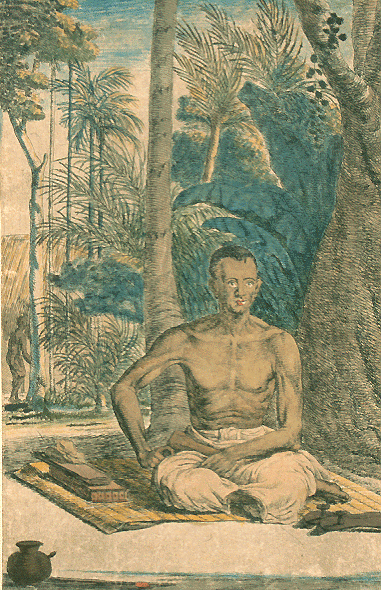
This pernicious system of Kulinism is prevalent only in Bengal. No trace of it whatever can be found in any other country of India. Kulinism has produced immense evil in this country. Owing to this system, a Kulin Brahmana is often obliged to keep his daughter a maid forever, for want of a bridegroom of the same rank of Kulins as he himself is. Sometimes one Kulin Brahmana marries some 300 wives, or else those poor girls would not have been married, for there might not be another person of the same social position among the Kulins as their fathers were. The result is that the country is being filled with horrible crimes.
Those Brahmanas who did not follow up their Brahminical duties, e.g. who acted as spiritual guides or as priests of the lowest classes, such as Suvarna vanika, Chandala, etc., were called Patita (degenerated or fallen) Brahmanas.
Kshatriyas in Bengal
The Kshatriya caste is rare in Bengal. Those Kshatriyas who live here cannot socially mix with those in the northwestern provinces, for the former on account of their long residence in the lower provinces have adopted to a great measure the habits, manners, and customs of the Bengalis, among whom they live. The Kshatriyas generally take the surnames of Barman and Mal.
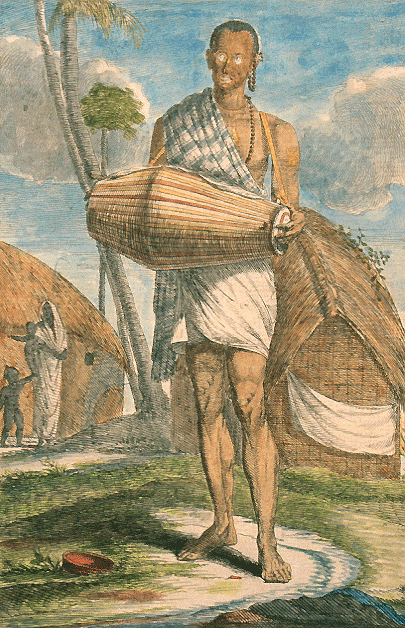
No original Vaisyas can be found in Bengal; in fact, unmixed Vaisyas are very rare. The jeweller class of Bengal, called the Jaharis, most likely have sprung from the Vaisyas. Almost all the Jaharis have embraced Jainism. They cannot socially mix with any other caste in Bengal. The Sudras are not of Aryan descent.
Among the castes found in Bengal, besides Brahmana, the highest is the Kayastha. This caste is said to have sprung from the Kshatriya caste. The story about the origin of the Kayastha runs thus: While Parusurama, one of the ten avatars (incarnations) of Vishnu, was engaged in extirpating the Kshatriyas, a Kshatriya king named Bhandrasena and his wife, big with child, took refuge in the hermitage of the sage Talavya. Parasurama went thither to kill them, but the sage informed him that he would on no account allow Parasurama to kill the king and the queen, for they were the sage's guests. An agreement was then entered into by which the king was not to allow his child, if male, to take up the profession of a Kshatriya, but the son should leave the sword and have recourse to the pen for his livelihood. A son was born to the king and his descendants were afterwards called the Kayasthas.

The Kayasthas were divided into the Uttara Rarhis, the Dakshina Rarhis and the Bangajas; the last being the original Kayastha inhabitants of Bengal, who now chiefly live in East Bengal. The Dakshina Rarhis at present have largely spread over this part of Bengal, They are subdivided into two classes, viz: The Kulins and the Mauliks. The Ghoshes, the Basus and the Mitras (three surnames of the Kayasthas) are the Kulins; all the rest being the Mauliks.
The Mauliks again are divided into two classes: the Deys, the Dutts, the Kars, the Palits, the Sens, the Sinhas, the Dasses and the Guhas are of the first class, the rest (which number 72) being of the 2nd class, The Guhas of the Bangaja Kayasthas are Kulins. It is said that the Dattas not acknowledging the brahmanas as their masters and themselves as servants of the Brahmanas were not honoured as Kulins.
The Uttara Rarhis, the Dakshina Rarhis and the Bangajas may take food cooked by one another, but no marriage takes place between them.
The Kayasthas have, like the Brahmanas, Gotras of their own; the Gotras of the Ghoshes, the Basus and Mitras are Saukalina, Goutama and Visva Mitra respectively. In the districts of Bankura, Beerdhoom, Burdwan and Midnapore, Kayasthas are very rare. There the Sadgopas are the chief of all the lower castes. They mostly depend upon agriculture.
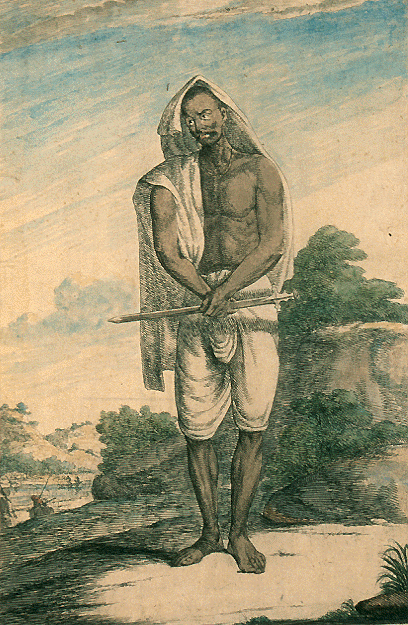
Many castes, besides those before mentioned, have sprung up in course of time, by their intermixture, such as the Bagdi, the Poda, the Dule, etc.
Another caste, more properly a religious sect, has sprung up since the time of Lord Chaitanya, the caste people being known by the name of the Vaishnavas. Persons of all castes are permitted to become Vaishnavas, among whom there is no distinction of castes.
There is a vast literature in Bengal, called kulaj or kulasastra dealing with the history and genealogy of the Brahmins and other important castes. The kulaji of Radhiya Brahmins hold them descendants of five families brought in the 8th or 9th century by an unidentified King Adisura. The kulaji of Varendra hold King Ballalsen (1158-79 A.D.) responsible for founding the Kulin system. The reason this system was started is described here:
"... after the reign of the Pala kings of Bengal, who were patrons of Buddhism, a revival of Hinduism followed during the reign of Sena kings, from the 12th century onwards. There was need for reorganizing the social structure of Hinduism based on the caste system, and some rigid rules were formulated to maintain the purity of the higher castes, particularly the Brahmins." [Benoy Ghose, Ibid. p.111]
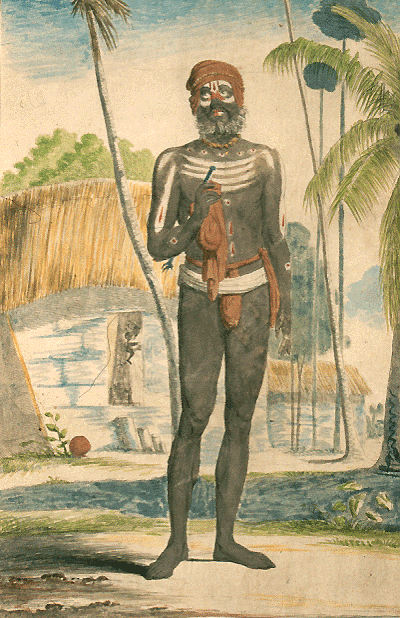
This system, if it deserves such a term as 'system', unfortunately led to hypergamy, where the bridegroom must be from a higher caste or subcaste, thus resulting in a surplus of unmarried girls. As sastras ordained that the daughters must be married off before puberty, and there were pronounced curses on defaulters, one man married a large number of brides who were never supported economically by the husband.
It must be remembered that all these sufferings were caused by the Brahmins to their own kith and kin, their own women folk, with only one intention, that is to keep the supremacy of their own caste, which was in danger due to Buddhist ideals in the society during the Buddhist kings' rule.
Reestablishing Brahmin Supremacy
King Ballalsen was a learned person. After the fall of Buddhist kingdom of Palas, with an aim of establishing a Brahmin religion from a fresh start, Ballalasen took many new steps, including oppression of Buddhists. He divided the country into four areas, with the purpose of establishing the kulin system. These areas were:
1. "Radha" - western area, the present Vardhaman Division;
2. "Varendra" - northern area;
3. "Vagadi" - forest lands around the sea in the south; and
4. "Vangal" - eastern Bengal
The Brahmins in these areas are called Radhi, Varendra, Vangal, etc.
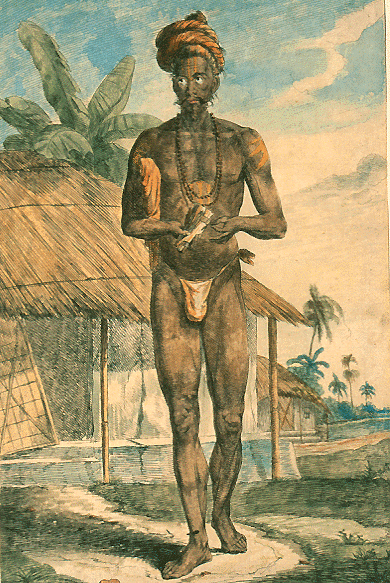
Chatterji observes, it was the work of the same king, who created four types of Bengalis in Bengal. For this purpose, he did the same thing as every other Hindu king used to do after winning a new territory, to keep his own caste 'pure' or make it so. That is, he called from some famous Brahmin centres like Mithila, Kashi, Prayag or Kanauj a few Brahmin families and settled them in his kingdom. This is similar to the bull-studs of Shiva, left by today's pious Hindu devotees to impregnate the cows.
So that these people should do their work properly and not interfere in one another's area of interest, he divided the country into four areas as above and settled in each one of them one batch of these 'pure' Brahmins, and relegated the work of increasing the population of 'Arya vamsha' in the three Hindu castes (perhaps meaning - Brahmin, Baidyas and Kayasthas). These people had been doing this work for about eight hundred years without any hindrance."
The famous Varendra families are Sanyal, Bagchi, Ghoshal, Mohotra etc. Among Radhis, five families are famous. They call themselves Kanyakubja, i.e. from Kanauj and are called after titles given by the Sena kings, as Upadhyaya Acharya, etc. These names are now corrupted to Chatterji, Mukherji, Banarji, Ganguli and Bhattachari due to English pronunciation in British times.
Chaterji states: "As is well known, to curb the Buddhist practice of becoming a bhikkhu and renounce the worldly affairs in young age, it is enjoined by the Brahmanic sastras that out of four ashramas, the grahasta ashram is the most important, and here one has to repay the four debts. One of them is to have a progeny, when man becomes free from the father's debt. But this Kulin system was quite different from method of repaying the 'father's debt'."
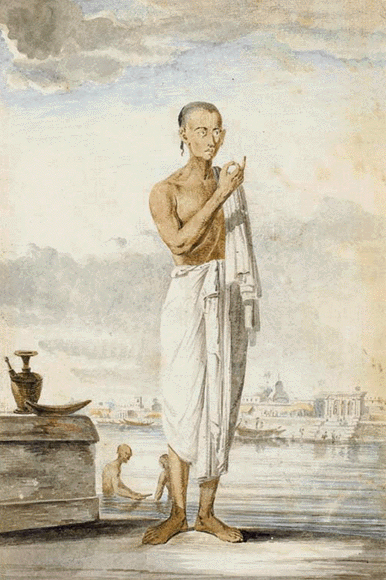
The child's caste was decided by the mother's caste. But sometimes the progeny of so-called low caste Brahmins could also get higher caste because of wealth. Many Kayasthas became rich and adored themselves with yadnopavita and became the dwijas, calling themselves as Kshatriyas." In that way, the place of Kayasthas in Bengal's varna system is among the Sudras, says Chaterji.
These hundreds of wives of the Brahmins used to reside with their parents. Their husbands used to wander from place to place doing bhajan, etc., and would visit them may be once or twice a year. This was enough for procreation and propagation of the race. Thus within a few generations, a vast corps of Brahmin progeny was created, which became the main support of the modern Brahmin religion, making them quite distinct from the original inhabitants of Bengal."
REFERENCES:
"Decline and Fall of Buddhism"
"Kulin System of Bengal"

The Sun
News
Editorials
Features
Sun Blogs
Classifieds
Events
Recipes
PodCasts
About
Submit an Article
Contact Us
Advertise
HareKrsna.com
Copyright 2005, HareKrsna.com. All rights reserved.
